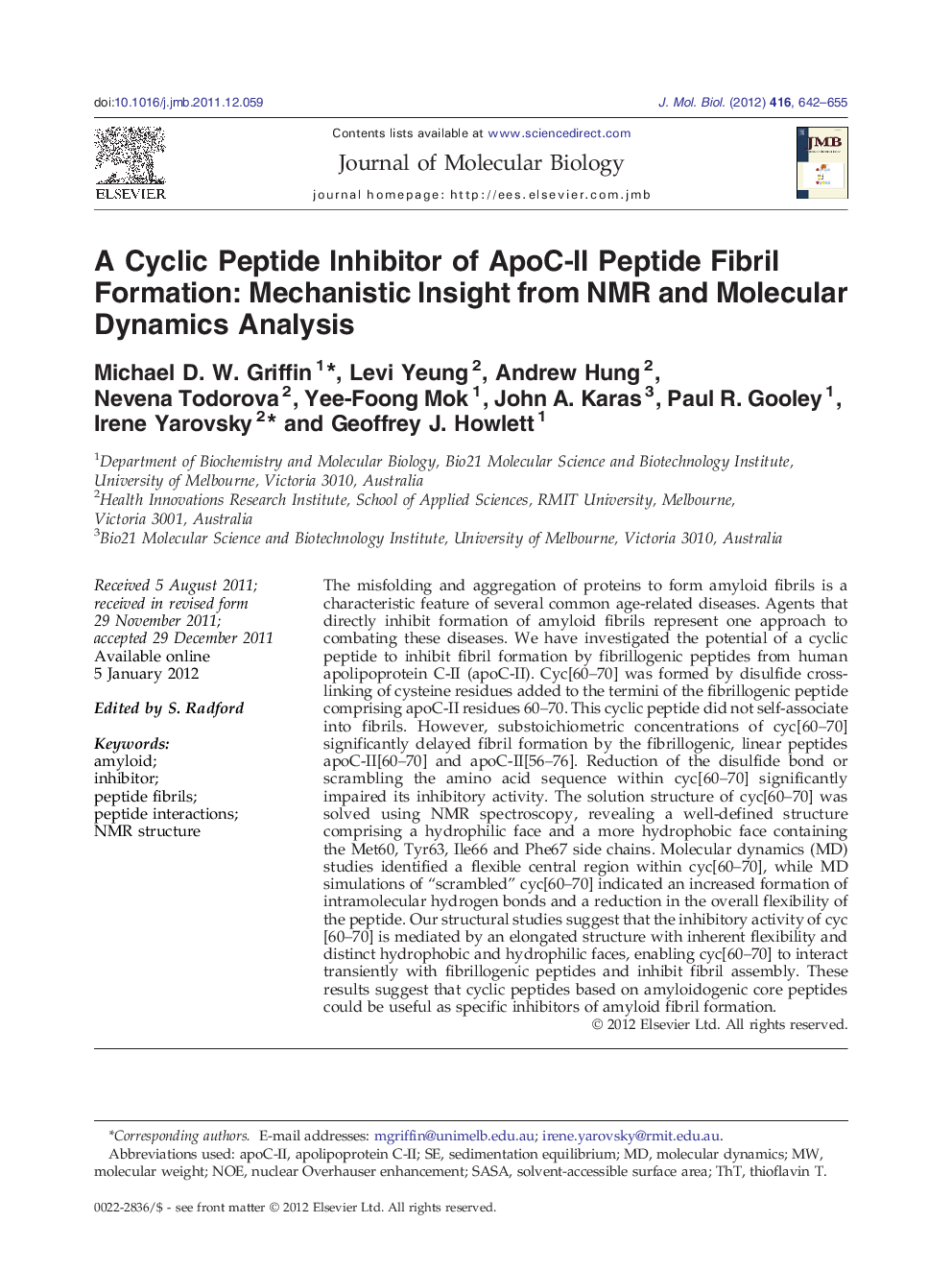| کد مقاله | کد نشریه | سال انتشار | مقاله انگلیسی | نسخه تمام متن |
|---|---|---|---|---|
| 2184699 | 1095920 | 2012 | 14 صفحه PDF | دانلود رایگان |

The misfolding and aggregation of proteins to form amyloid fibrils is a characteristic feature of several common age-related diseases. Agents that directly inhibit formation of amyloid fibrils represent one approach to combating these diseases. We have investigated the potential of a cyclic peptide to inhibit fibril formation by fibrillogenic peptides from human apolipoprotein C-II (apoC-II). Cyc[60–70] was formed by disulfide cross-linking of cysteine residues added to the termini of the fibrillogenic peptide comprising apoC-II residues 60–70. This cyclic peptide did not self-associate into fibrils. However, substoichiometric concentrations of cyc[60–70] significantly delayed fibril formation by the fibrillogenic, linear peptides apoC-II[60–70] and apoC-II[56–76]. Reduction of the disulfide bond or scrambling the amino acid sequence within cyc[60–70] significantly impaired its inhibitory activity. The solution structure of cyc[60–70] was solved using NMR spectroscopy, revealing a well-defined structure comprising a hydrophilic face and a more hydrophobic face containing the Met60, Tyr63, Ile66 and Phe67 side chains. Molecular dynamics (MD) studies identified a flexible central region within cyc[60–70], while MD simulations of “scrambled” cyc[60–70] indicated an increased formation of intramolecular hydrogen bonds and a reduction in the overall flexibility of the peptide. Our structural studies suggest that the inhibitory activity of cyc[60–70] is mediated by an elongated structure with inherent flexibility and distinct hydrophobic and hydrophilic faces, enabling cyc[60–70] to interact transiently with fibrillogenic peptides and inhibit fibril assembly. These results suggest that cyclic peptides based on amyloidogenic core peptides could be useful as specific inhibitors of amyloid fibril formation.
Graphical AbstractFigure optionsDownload high-quality image (76 K)Download as PowerPoint slideHighlights
► A cyclic derivative of a linear fibrillogenic peptide from apoC-II was studied.
► The cyclic peptide inhibited fibril formation by the linear parent peptides.
► The structure of the cyclic peptide comprises hydrophilic and hydrophobic faces.
► MD simulations of the cyclic peptide indicate a flexible, dynamic structure.
► Cyclic core peptides could be useful inhibitors of amyloid fibril formation.
Journal: Journal of Molecular Biology - Volume 416, Issue 5, 9 March 2012, Pages 642–655